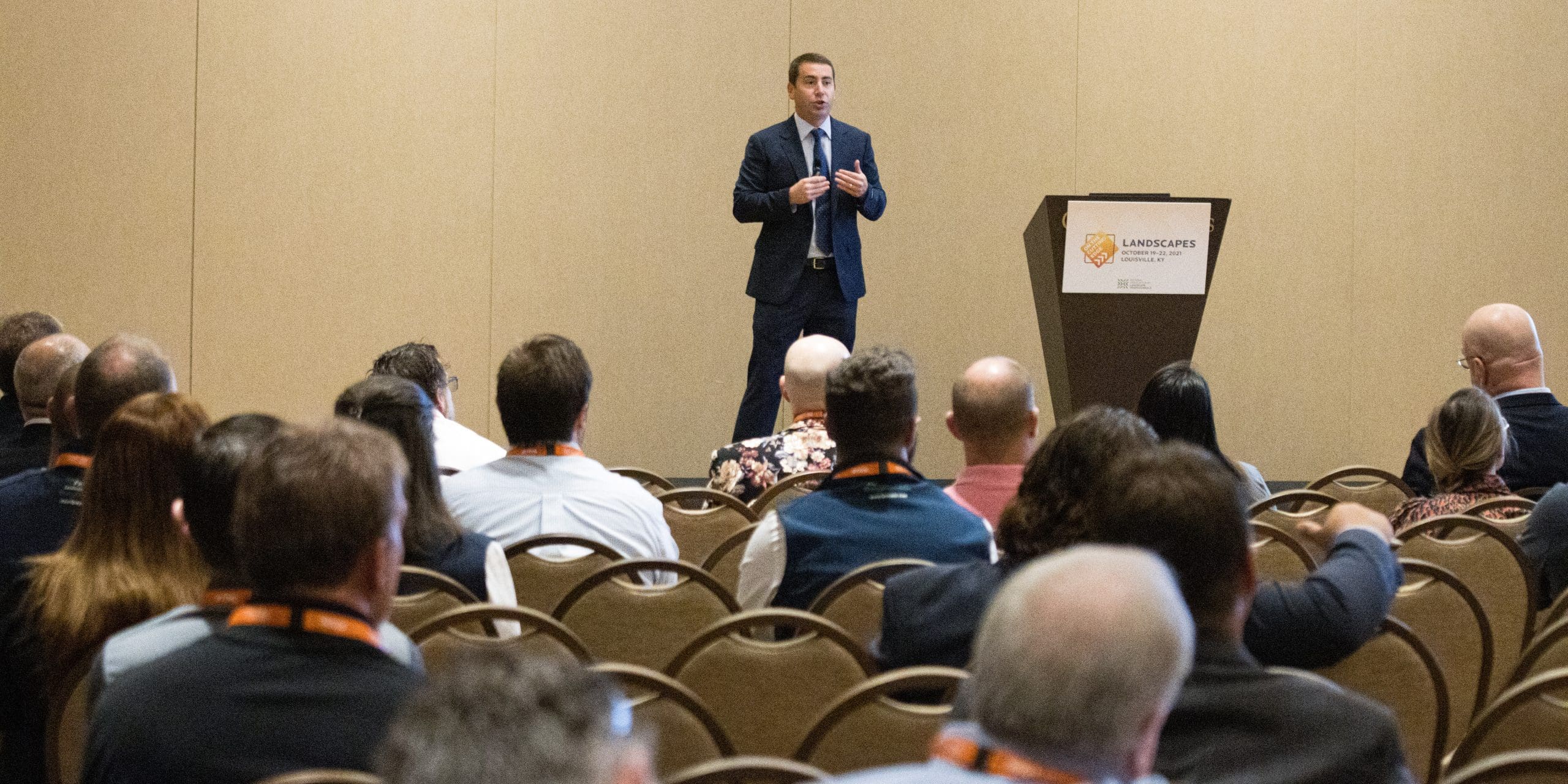
During LANDSCAPES 2021, Andrew Bray, NALP’s VP of government relations, provided an update on a number of advocacy topics that impact the lawn and landscape industry.
If you missed this presentation, here are the five key topics Bray covered and the main takeaways.
CARB
The California Air and Resource Board (CARB) released a proposed regulation on Oct. 12 to ban the sale of gas-powered equipment using small-off road engines (SORE) beginning in 2024. This was expected from a draft proposal released by CARB in March 2021 that moved this timeline up from 2026. There has also been significant media attention following legislation that mirrors the CARB proposal that was recently signed into law by California’s governor Gavin Newsom.
“This is a big deal and we need to talk about this correctly,” Bray said.
He stressed that NALP is a steward of the environment and wants to reduce our carbon footprint, but we must do so in a responsible and thoughtful manner. The impending regulation ignores the difference between commercial and consumer operators and technical feasibility issues. Some of the major issues are the cost of the equipment, infrastructure issues, and an insufficient rebate program.
Bray went over the timeline that lead up to this law and NALP’s efforts to talk with CARB to have the bill’s wording changed. He said NALP also plans to lobby Newsom as well. He pointed out this is not just a California issue because once EPA grants a waiver for California to regulate emissions (all other 49 states are preempted) other states on the West Coast and in the Northeast are permitted to follow suit if California is successful.
H-2B Update
The first half cap for H-2B visas was hit in September this year when it usually occurs in November or December. This is significant because this enables us to request a supplemental release of H-2B visas for FY 22, which began on Oct. 1. Supplemental visas have never been released for the first-half cap and we believe if the Administration does release supplemental visas it will foreshadow a more predictable and timely process when the second-half cap is met in January for the more overly prescribed April 1 second-half cap.
The Biden Administration has demonstrated their discretionary authority in May of this past year, releasing 22,000 additional visas for the second-half cap of FY 21. 6,000 of the 22,000 were carved out for Northern Triangle Countries (El Salvador, Guatemala, Honduras), and we believe the Administration’s support for the H-2B program will continue to be hedged with carve-outs for the Northern Triangle countries to reduce chain migration and assist in nation-building. NALP supports these efforts.
President Biden only has this authority because NALP has successfully had language inserted into Appropriations packages each year.
For the first time in years, the rider for supplemental visas if the need for workers exceeds the 66,000 visa cap is in both the House and Senate versions of the appropriations bill and we stand in a strong position as we near the Dec. 3 deadline to pass these bills to prevent a government shutdown.
Bray says another recent win was the creation of the Returning Worker Exception Act of 2021 H.R. 3897. He said while it isn’t likely to pass this year, and can take several years before it does pass, this is still notable legislation.
“This is progress,” he said. “This is a testament to the grassroots of the landscape industry and continuing to build momentum to permanently raise the cap and avoid the annual Appropriations language to then further pressure the Administration to release supplemental visas.”
Pesticides
Bray said NALP will be keeping an eye on the pesticide registration review, as every registered pesticide is reviewed at least every 15 years to determine if it continues to meet the FIFRA standard for registration.
While glyphosate and neonicotinoids have been under fire in recent years, Bray predicted 2-4-D might be the next pesticide to be targeted.
Vaccine Mandate
Bray didn’t have a lot to add to the new vaccine mandate that requires companies with 100+ employees to ensure their workers are vaccinated or tested weekly. OSHA will issue an Emergency Temporary Standard to implement this requirement.
Currently, the mandate raises questions as to how employers will verify their employees are vaccinated, who will bear the cost of weekly testing, and what type of test will be required. Bray expects further information will be released at the end of October.
State Issues
Bray also shared how he and the rest of the government affairs team covers and stays on top of state legislation that may impact the industry.
He encouraged members to get more involved with advocacy.
“The only way we’re going to beat this stuff is if you’re involved,” he said. “You want to know how to stop this stuff? Engage at the state and local levels.”

